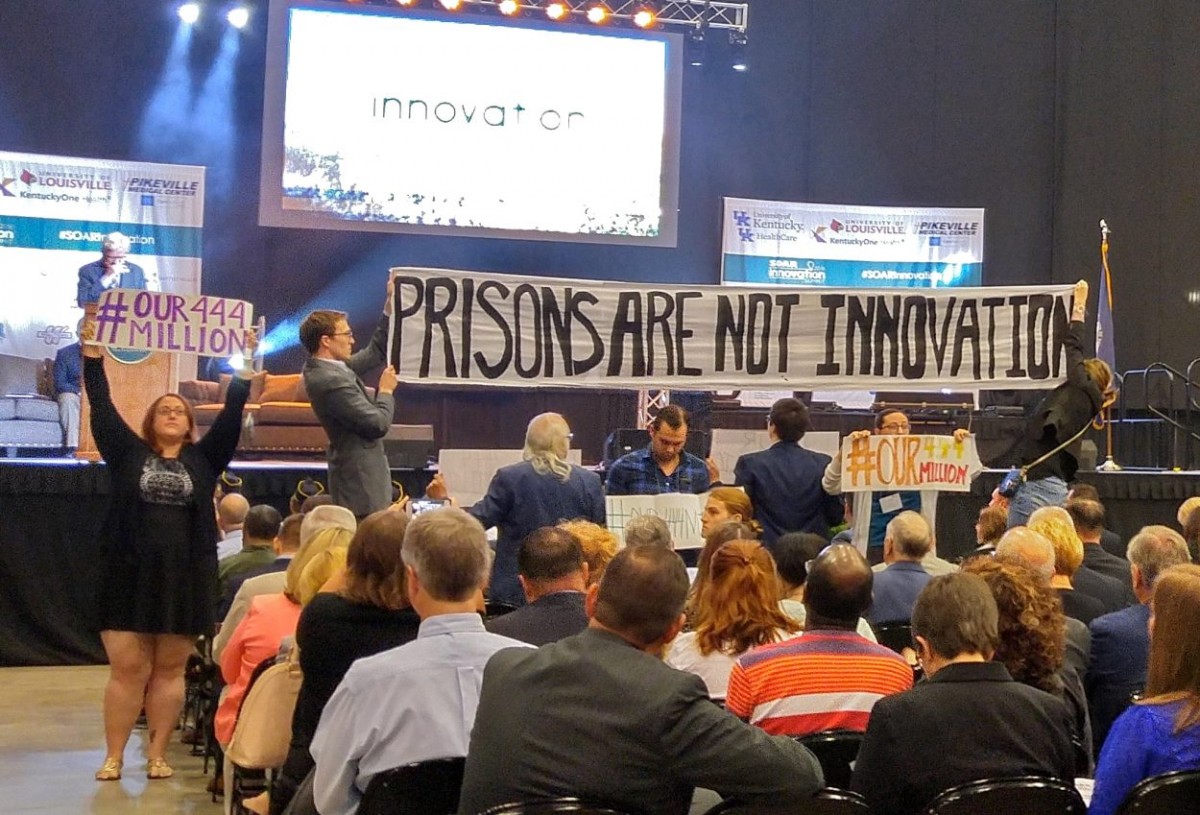Understanding Appalachia requires coming to grips with the complexities and challenges of rural healthcare.
It means understanding that addiction isn’t just an opioid issue, as methamphetamines make a comeback in our communities. It means understanding that health goals reflect a Maslow’s Hierarchy of Needs chart from one community to the next, and that how we define wellness is as diverse and place-based as other forms of Appalachian culture. It means understanding that there are no one-size-fits-all solutions in the creative ways that our communities tackle addiction, vaccines, mental health, access and affordability.
With support from Jim and Alexis Pugh, we hired a part-time editor/reporter for developing this beat. We’d like to introduce him to our readers and invite story pitches for tackling this topic together.
— 100 Days in Appalachia
Introduce yourself to the 100 Days audience. How does your background inform your perspective on health and health care issues in Appalachia?
I’ve been covering rural health throughout the Southeast for some years now. Appalachian born, in the mountains of Western North Carolina. I began writing about health care on a regular basis in 2008 with a series of articles on the breakdown of the mental health care system in North Carolina. I then began to more fully appreciate the complexity of health care issues and the range of repercussions of the decisions we make societally about health care.
I worked for a couple of years under a grant to cover rural health issues in North Carolina, and that job allowed me to spend a lot of time on two-lane roads – those roads William Least Heat-Moon coined the “blue highways” for the color in which they appeared on old Rand McNally maps. I’ve since been doing the same work as a freelancer, from the Finger Lakes region of New York to the Mexico border. I love driving those roads, realizing that I’m now somewhere I’ve never been before, then arriving at my destination and exploring how the issues this particular community is grappling with are the same and different as others elsewhere.
I’m looking forward to now returning my focus to Appalachia. I divide my time between Nashville, Tennessee, and Carrboro, North Carolina. I make the trek between those two cities every couple of weeks, and whenever I’m headed west and begin the climb up Old Fort Mountain or headed east and hit Pigeon River Gorge, I feel the tug. It’s less than a hundred-mile stretch, but it’s so distinctly Appalachia.
With 100 Days, I’m psyched to reorient along a roughly north-south axis, unfolding this region that ambles from Schoharie County, New York, to Kemper County Mississippi. Granted, much of this work will be done from my desk in Nashville or Carrboro. But I’ll always be looking forward to that next excursion.
Of course, not all of Appalachia is rural. I do enjoy Appalachia’s metropolitan areas, love discovering them anew, and look forward to further delving into their particular health care issues and successes.
Urban or rural, I’m intrigued by the role that place plays in the health care issues communities face and in their outcomes. I’m so looking forward to witnessing Appalachia.
When people see that we’re launching a health vertical, it might seem like we’re late to the game, that any number of outlets already have a strongly established focus on issues in this area. In what ways do you hope to lead the conversation about health in Appalachia?
Appalachia is facing some considerable health care challenges. In addition to the rising costs of care, rural communities are experiencing diminishing access to services, including hospital closures, and difficulties in recruiting health care professionals. Rural and urban communities alike have been particularly hard hit by opioids.
But Appalachia isn’t a monolithic region, and there are nuances to these issues from one sub-region to the next, from community to community. While underscoring shared concerns, I intend to draw out those distinctions. I most especially want to bring attention to the particular ways in which communities are finding solutions
When I write that I’m from Western North Carolina, I capitalize the “W,” as those in the region commonly do – because beyond identifying the region geographically, “Western” is an integral part of a proper noun, denoting cultural distinctions. I could ramble on about what those distinctions are – the libertarian instinct, etc. My point is that place matters. Murphy, North Carolina, in the far southwestern corner of WNC, is 355 miles from Raleigh, the state capital.
There are four other state capitals closer to Murphy. To assume that all North Carolinians share a sense of place, an identity, would be a mistake. I want to explore the contours of geography and culture, and how they shape health, health care, attitudes, practice and policies.
I intend to report on the challenges individual communities are facing and their responses to those challenges, and on decisions that the federal and state governments make and the outcomes of those decisions – whether to expand Medicaid coverage, for example, and the implications of that decision.
Are there any specific topics you think media outlets outside of the region do a bad job of covering here or that have perpetuated stereotypes of the people in Appalachia? In what ways do you hope to challenge those views?
I think there’s a perception that Appalachia is waiting for a handout, that people in the region are expecting the federal government to solve all their problems. I hope to help counter that narrative.
The first piece I wrote for 100 Days was titled “New Report Cites Economic Woes, Addiction and Optimism in Appalachia.” It was about the results of a survey conducted by the Robert Wood Johnson Foundation, National Public Radio and the Harvard T.H. Chan School of Public Health titled “Life in Rural America.” Those results underscored the loss of jobs and the scourge of addiction. But the researchers also found that rural Americans are largely optimistic about their future, placing their faith in a shared sense of community. I described how that sense of community is expressed in Moorefield, West Virginia.
I strive to take a solutions-oriented approach to my work. I’ve written about the closures, mergers and acquisitions of hospitals and the ripple effects they have on communities. That’s certainly an issue today in Appalachia. In reporting on these transactions, I’ve described how communities have responded – at times, rebelled.
I intend to tell the stories of ground-level, multi-fronted responses to the health care challenges Appalachian communities are experiencing.
The focus outside, and inside, the region, in terms of covering health in Appalachia, is largely focused on the opioid epidemic. In what ways do you hope to shine a new light or further the conversation around this topic?
I refer to my answer to the previous question: solutions. Whenever possible, I intend to report on solutions.
Recently, I attended a listening session hosted by the Appalachian Regional Commission in the small town of Wilkesboro, North Carolina. The objective was to discuss workforce issues related to the opioid epidemic. Participants brainstormed job-placement strategies and how communities can engage substance-abuse treatment programs, recovery initiatives and other services. They shared information on available resources in the community. People had driven up to three hours to attend – health care professionals, business owners, social workers, elected officials, academics, law-enforcement officers and plain-old concerned citizens. It was an impressive display of solution-oriented community resolve.
I’ve reported on naloxone initiatives, needle-exchange programs, law-enforcement assisted diversion programs and health care professionals assisting mother and child in alleviating the effects of neonatal abstinence syndrome, addressing the stigma attached to medical-assisted treatment. I’ve ridden along with a peer support specialist who helps former inmates in recovery and others who assist those exiting the criminal justice system.
I intend to remain attentive to programs focused on the treatment, care and recovery of those with substance-use disorders and on the prevention of addiction, but with an eye toward how we are solving these problems in our communities.



